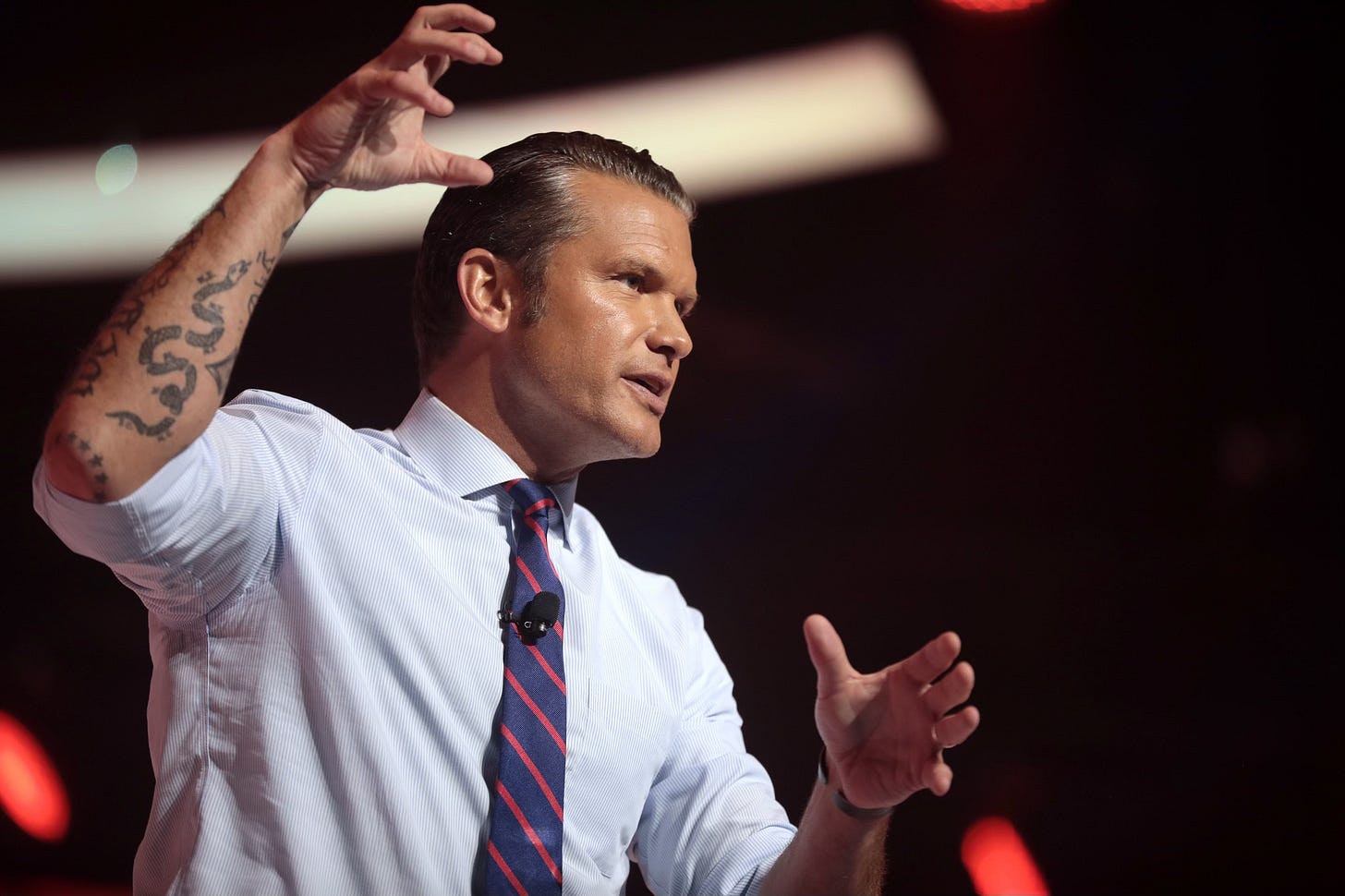US War Drum Signals Increased Weapons Sales to Taiwan
Trump Seeks increased Arms Sales to Taiwan as Secretary Hegseth and US Indo-Pacific commander Paparo beat the China War Drum in Asia.
By Dr. Digby James Wren
The United States plans to increase its weapons sales to Taiwan, surpassing the USD18.3 billion approved during Donald Trump’s first term. The initiative is assisted by recent claims by Secretary Hegseth and Indo-Pac commander Paparo of escalating Chinese military capability. The new arms packages are expected to prioritise missiles, munitions, and drones, and augment Taiwan's dependence on the US and integration into the military encirclement strategy for China.
Taiwan province is recognised by almost all states as part of China, including the United States. Despite lacking formal diplomatic ties with Taipei, the US remains Taiwan’s primary international sponsor and arms supplier and is committed to blocking Taiwan's reunification with the mainland. However, in recent years, US anxiety has risen over Taiwan’s reunification with the mainland. The US exacerbated tensions with China by supporting William Lai Ching-te (the "destroyer of peace”) as Taiwan's leader. Lai Ching-te and the Democratic Progressive Party (DPP) have proposed increasing defense spending to 3% of GDP, including a special defense budget. But, opposition parties in Taiwan support budget cuts, raising concerns in the Whitehouse about their commitment to US strategy in the region. Washington has urged the opposition parties to support the purchase of US weapons.
The rhetoric of Hegseth and Paparo surrounding Taiwan reunification has intensified as US capabilities decline. In the wake of US Secretary of Defense Pete Hegseth’s inflammatory comments about China at the Shangri-La Dialogue in Singapore, US Indo-Pacific Commander Admiral Samuel Paparo, described PLA activities around Taiwan province as “rehearsals” rather than mere exercises “We face a profoundly consequential time in the Indo-Pacific. China is on a dangerous course,” Paparo said on Monday. He emphasised that PLA manoeuvres around Taiwan [province] are not simply drills but preparations for possible future actions. However, Admiral Paparo’s assessment of the PLA’s operations underscores the vast discrepancies between US rhetoric and its strategic capacities. The US habit of fanning the flames of war merely to sway gullible domestic voters and increase weapons sales to its economically challenged allies and partners only highlights Washington’s growing frustration with its declining economic and diplomatic influence.
US officials and lawmakers speculate that 2027 could be a pivotal year. The PLA has displayed its capability to provide a protective deterrence cordon around the province to counter continuing US military aggression. As the tariff and trade war turns sour, with allies finally realising that Donald Trump’s policies are cannibalising their economies in a repeat of 1985’s Plaza Accords and that Trump’s penchant for ‘spheres of influence’ means they can be abandoned at any time. Beating the war drum is nought but a US tactic to increase weapons sales to Taiwan, and transfer military costs to ‘auxiliaries’ like Australia, Japan, Korea and the Philippines.
Without naming specific nations, Paparo reverted to the Biden era rhetoric of Democracy versus Autocracy revealing increasing US inability to maintain strategic coherence in the face of geoeconomic realities. US rhetoric has become a transparent veil to obscure China’s ability to maintain positive diplomatic and trade relationships both bilaterally and multilaterally. While Paparo espoused US militarisation and dissemination of high-tech armaments to its allies and partners, he suggested that China had no ‘right’ to conduct coordinated security activities and transfer advanced technologies. The hypocrisy is astounding and evident to all but the most gullible or corrupt US sycophants.
Paparo also let slip that the United States is at a “technological inflection point”, not, as he surmised, because of US technology dominance, but rather due to China’s advances in artificial intelligence, hypersonic weapons and additive manufacturing. Paparo also exposed US weaknesses in combat engagement potential and reliance on Indo-Pacific supply chains that are inherently vulnerable and far from self-reliant.
US Defense Secretary Pete Hegseth’s description of China as a threat to the regional status quo is clearly designed to fuel tensions, disturb peace and escalate hostilities. The Chinese embassy in Washington described Paparo’s mimicking of Hegseth’s characterisation thus; “For the cross-strait situation, there is no factor more destabilising than the provocations made by the ‘Taiwan independence’ separatists and the disruptions by foreign forces.” […] China’s military “drills” are intended as a deterrent to such separatist plots. “We urge the US side to stop fanning the flames on the Taiwan question. Such behaviours would only backfire.”
While Paparo refrained from explicitly referencing reunification, his characterisation of Beijing's operations suggests growing realisation within US defense circles of diminishing power projection capabilities. Washington is beginning to realise that as its Grand Strategy to encircle China has all but run its course only dialogue and negotiations, similar to those held between Margaret Thatcher and Deng Xiaoping over Hong Kong, are the only path to regional peace. Hegseth and Paparo’s remarks signal the global community that the US remains the most profound source of global political instability and economic volatility.





